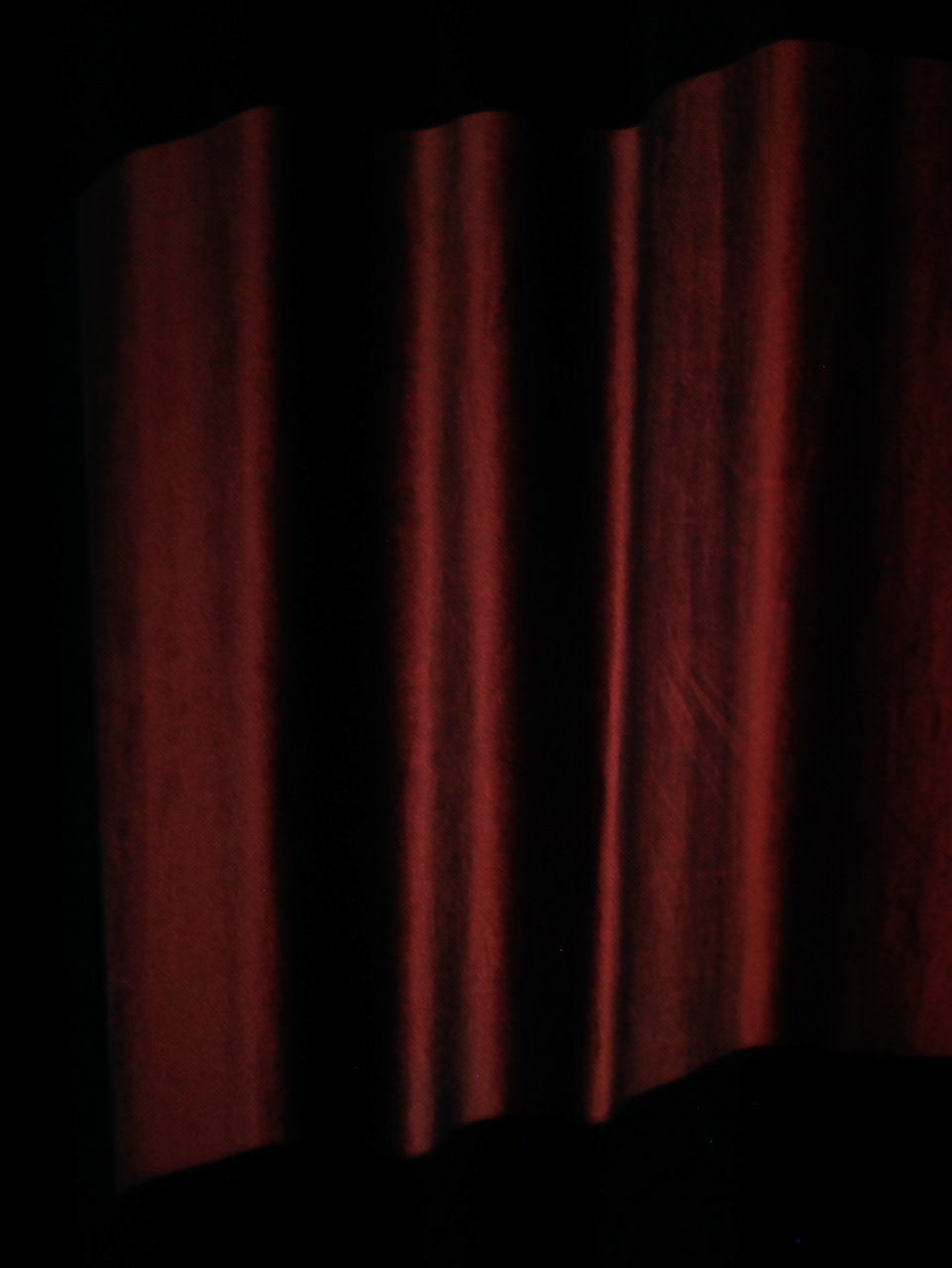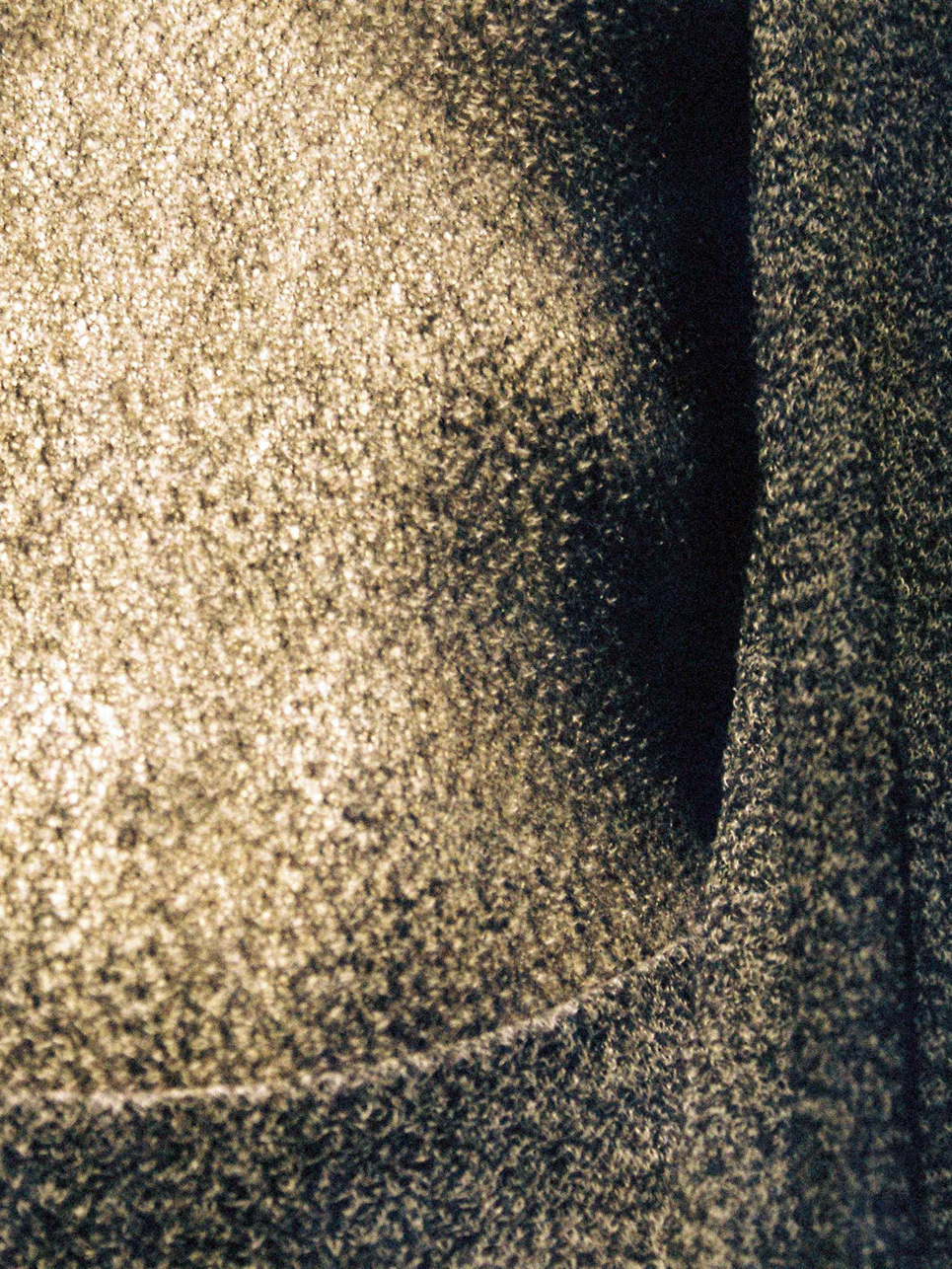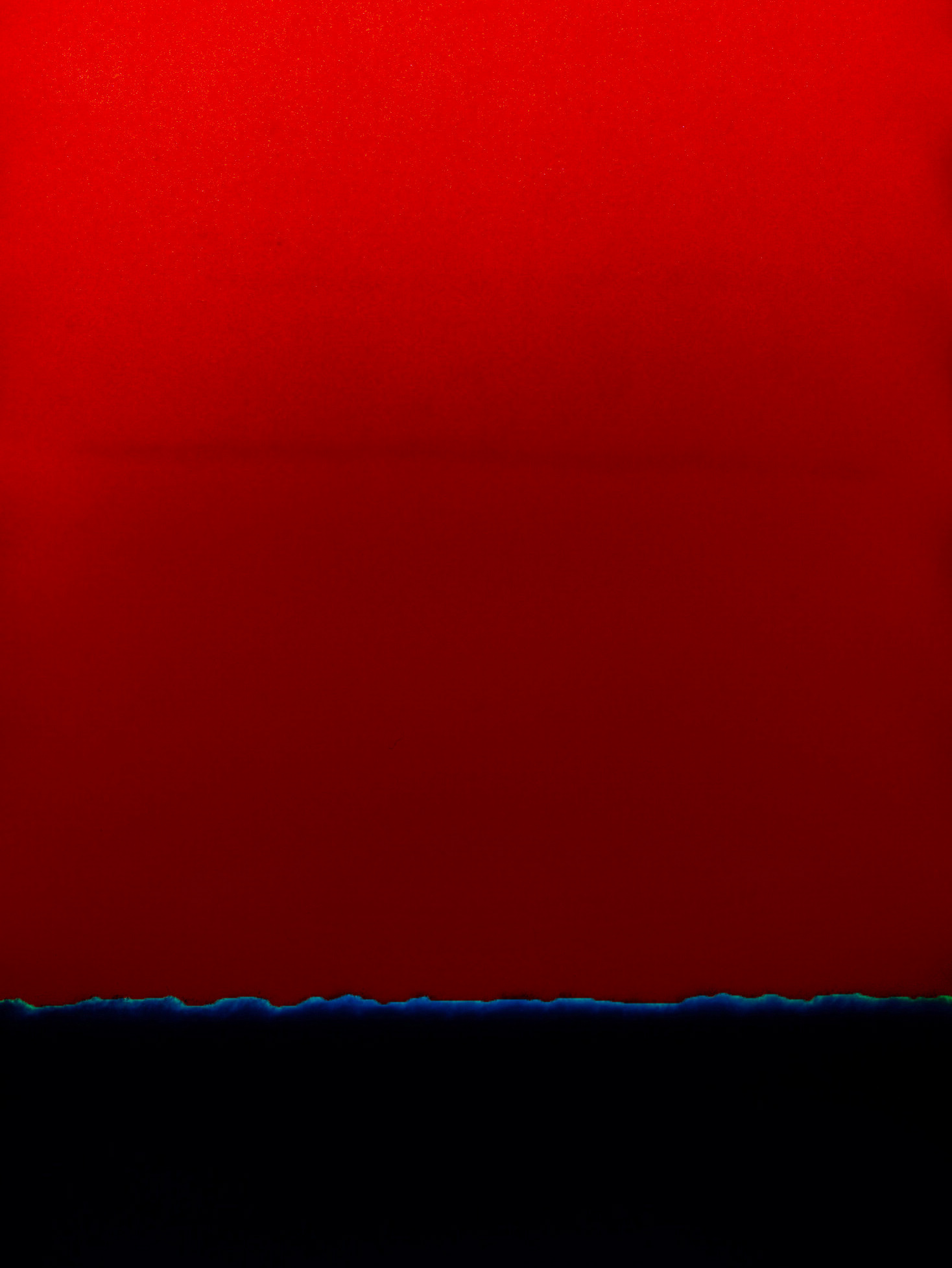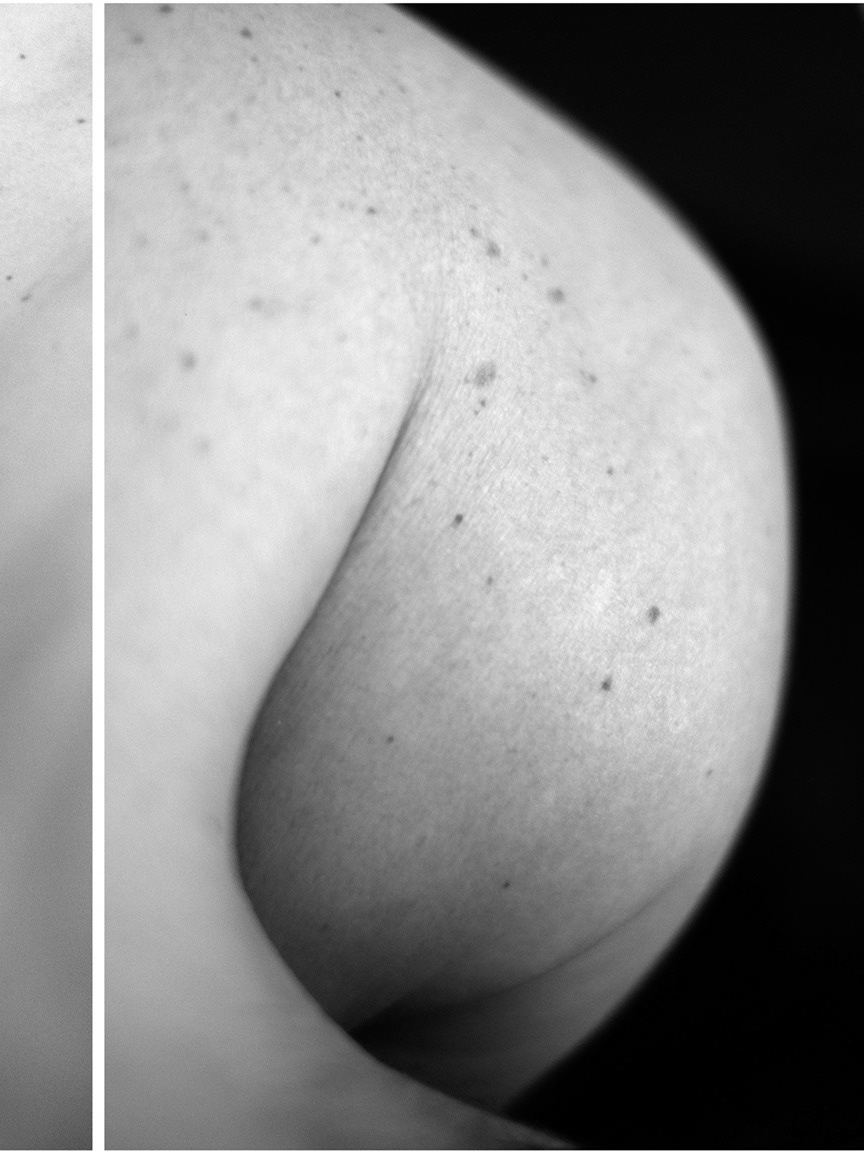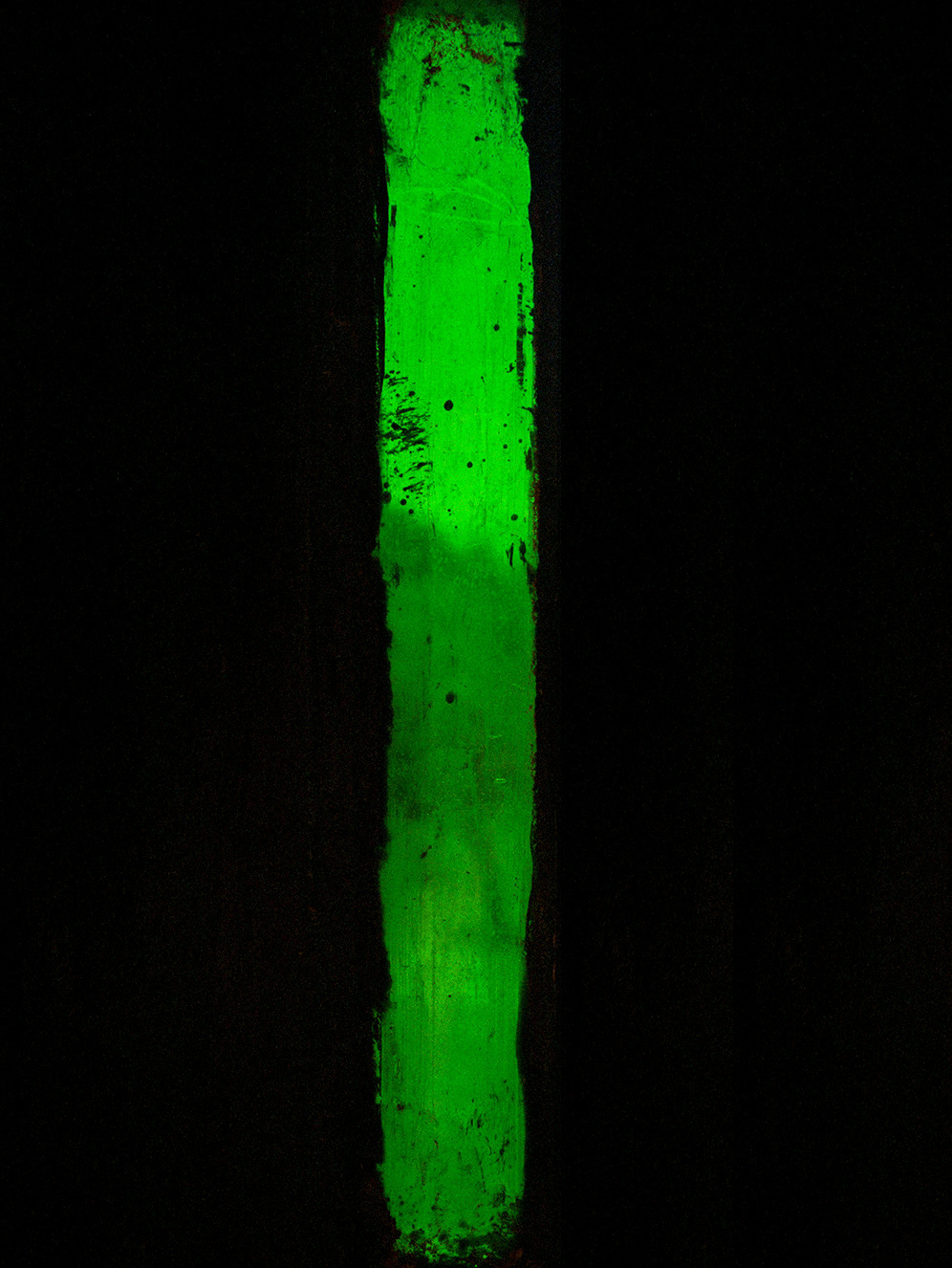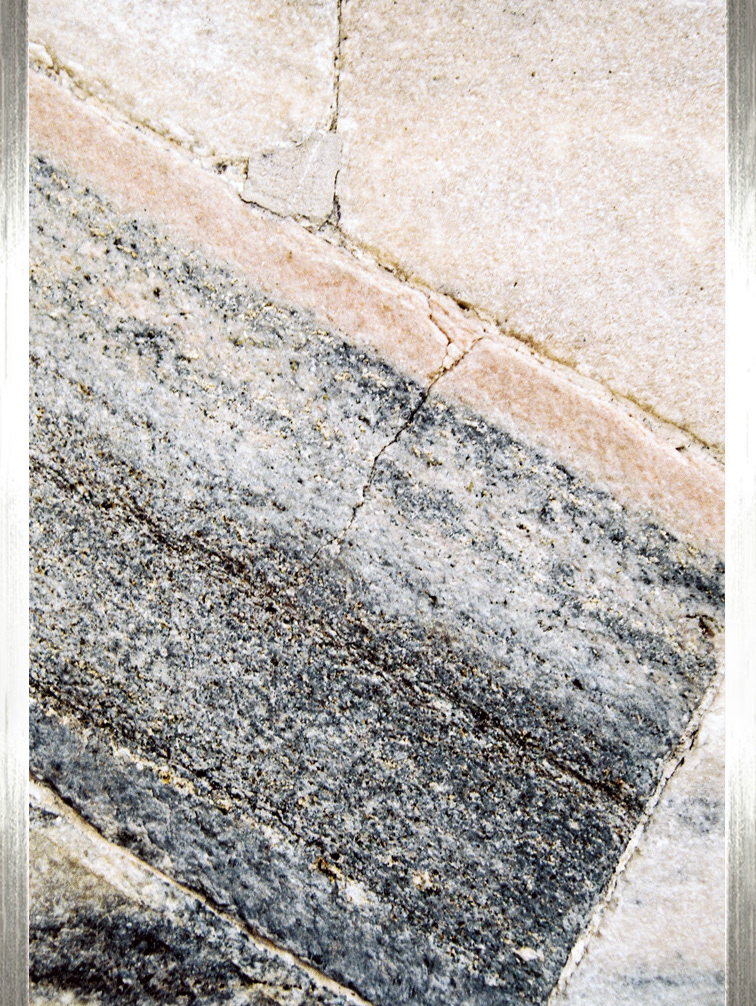Disposée en une ligne horizontale, comme une ligne d’horizon jamais atteignable, dont le début pourrait être la fin et réciproquement, Fronteira (Frontière) se compose de 36 images. Nombre choisit pour reformer l’unité de la pellicule, comme s’il était possible d’imprimer sur le film une seule et même histoire, sans coupures, sans ratages. C’est évidemment un montage, qui porte le titre d’un marquis portugais - le marquis de Fronteira - dont le nom provient de ses exploits pendant la guerre de restauration au 17ème siècle, guerre qui rend au pays son indépendance face à la colonisation espagnole. Ces images ont été capturées dans le jardin de son palais, à Lisbonne, où sa descendance habite encore.
Les frontières réelles et symboliques sont restaurées.
Ici, elles prennent la forme d’un mur bleu, disparaissant par endroits sous la végétation ; la splendeur d’autrefois s’évanouissant sous les marques du temps. Ce bleu qui devient pale, les fissures qui se créent viennent dégrader sa surface, comme des signes silencieux du passé. Par endroit, la couleur entièrement disparue laisse place à des lignes et des formes, des lacs et des rivières semblent s’y former, pour redessiner une nouvelle cartographie. Peut-on y lire l’histoire d’un pays ? Non bien sûr, mais on peut le lire comme simple métaphore des traces que le temps laisse sur nous, rendant plus complexe les molécules des êtres qu’il vient altérer.
C’est aussi une plongée visuelle dans la couleur, qui porte en elle une émotion, une beauté, et vient apporter un temps de pause face au mouvement du monde. Un temps d’arrêt pour respirer et regarder.
Arranged in a horizontal line, like a never-reachable horizon, whose beginning could be the end and vice versa, Fronteira is made up of 36 images. This number was chosen to re-establish the unity of the film, as if it were possible to print a single story on the film, with no cuts, no gaps. It is, of course, a montage, named after a Portuguese marquis - the Marquis de Fronteira (Frontier), whose name derives from his exploits during the 17th-century War of Restoration, which restored the country’s independence from Spanish colonization. These images were captured in his palace in Lisbon, where his descendants still live.
Real and symbolic borders are restored.
Here, they take the form of a blue wall, disappearing in places beneath the
Here, they take the form of a blue wall, disappearing in places beneath the
vegetation; the splendor of yesteryear fading under the marks of time. As the blue fades, the cracks that appear degrade its surface, like silent signs of the past.
In places, the color that has entirely disappeared gives way to lines and shapes, and lakes and rivers seem to form, redrawing a new cartography.
In places, the color that has entirely disappeared gives way to lines and shapes, and lakes and rivers seem to form, redrawing a new cartography.
Is it possible to read the history of a country? No, of course not, but it can be read as a metaphor for the traces that time leaves on us, making the molecules of the beings it alters more complex.
It’s also a visual plunge into color, which carries with it an emotion, a beauty, and provides a moment’s pause in the face of the world’s movement. A pause to breathe and look.
It’s also a visual plunge into color, which carries with it an emotion, a beauty, and provides a moment’s pause in the face of the world’s movement. A pause to breathe and look.
